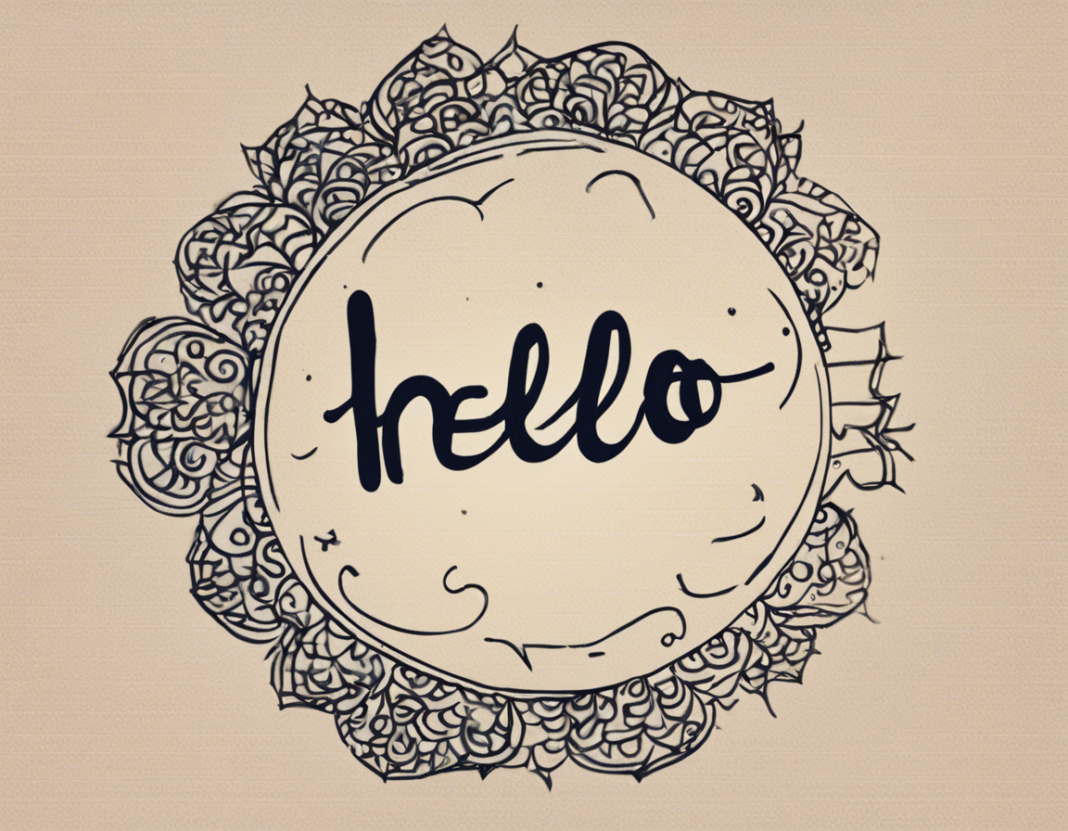India is a country rich in cultural diversity and tradition. With over 1.3 billion people, it is home to various languages, customs, and traditions. One of the most common and essential aspects of Indian culture is greeting people. Greetings play a significant role in Indian society as they reflect respect, warmth, and hospitality. Among the plethora of languages spoken in India, Hindi is one of the widely spoken languages. ‘Hello’ is a universal greeting used in English, but in Hindi, there are several ways to greet someone depending on the time of day, the person’s age, or the level of formality. Here are some essential tips for greeting in Hindi:
The Basic Greetings
In Hindi, the word for ‘hello’ is “नमस्ते” (Namaste), which is a versatile greeting that can be used at any time of the day. It is a sign of respect and roughly translates to “I bow to you.” This greeting is often accompanied by pressing one’s palms together in front of the chest and slight bowing.
Other Common Greetings
- “नमस्कार” (Namaskar): This is another formal way of greeting someone. It is used with elders or in more formal settings.
- “हैलो” (Hello): While not a native Hindi word, ‘hello’ is widely understood and used in more casual or informal situations, especially with younger people or in urban areas.
Time-specific Greetings
In Indian culture, the time of day can influence the choice of greeting. Here are some common greetings based on the time of day:
Morning Greetings
- “सुप्रभात” (Suprabhat): This is used to say ‘good morning’ in Hindi.
- “नमस्कार, शुभ प्रभात” (Namaskar, Shubh Prabhat): A more formal way of saying ‘good morning.’
Afternoon Greetings
- “नमस्ते, शुभ दुपहर” (Namaste, Shubh Dupahar): This can be used to greet someone in the afternoon.
Evening Greetings
- “नमस्ते, शुभ संध्या” (Namaste, Shubh Sandhya): This is a common greeting for the evening hours.
Night Greetings
- “नमस्ते, शुभ रात्रि” (Namaste, Shubh Raatri): This is used to wish someone ‘good night.’
Greetings Based on Relationship
The relationship between individuals also plays a role in deciding how to greet someone. Here are a few examples:
With Elders
- When greeting elders, it is common to add a term of respect before the greeting. For example, “नमस्ते दादाजी/दादीजी” (Namaste Dadaaji/Dadiji) for grandfathers and grandmothers.
With Peers or Friends
- For peers or friends, a simple “नमस्ते” (Namaste) or even a casual “hi” can suffice, depending on the familiarity between individuals.
Body Language in Greetings
In addition to the words used, body language also plays a crucial role in greeting in India. Here are a few important points to keep in mind:
- Palms Together: The gesture of pressing palms together in front of the chest not only accompanies the greeting but also signifies respect.
- Head Nod: A slight nod of the head while greeting someone is considered polite and shows acknowledgment.
- Eye Contact: Maintaining a friendly gaze and eye contact while greeting someone is seen as a positive gesture.
Frequently Asked Questions (FAQs)
Q1: What is the difference between “नमस्ते” and “नमस्कार”?
A1: Both “नमस्ते” and “नमस्कार” are respectful greetings in Hindi. “नमस्ते” is more commonly used in everyday situations, while “नमस्कार” is considered slightly more formal and is often used with elders or in a formal setting.
Q2: Can I simply say “Hello” in India?
A2: Yes, saying “Hello” in India is widely understood, especially in urban areas and among the younger population. However, using Hindi greetings like “नमस्ते” can show respect and appreciation for the local culture.
Q3: How do I greet someone younger than me in Hindi?
A3: Greeting someone younger in Hindi can be done with a simple “नमस्ते” or even a casual “hi.” Maintaining a friendly and approachable demeanor is key.
Q4: Is it important to use the palm-together gesture while greeting in Hindi?
A4: While not mandatory, using the palms-together gesture while saying “नमस्ते” adds a traditional touch and shows respect. It is a common practice, especially when meeting someone for the first time.
Q5: Are there any regional variations in greetings in India?
A5: Yes, India is a diverse country with various regional languages and customs. Greetings may vary based on the region, so it’s beneficial to learn local greetings when traveling to different parts of the country.
In conclusion, greetings form an integral part of Indian culture, reflecting the values of respect, warmth, and hospitality. By understanding the nuances of greeting in Hindi, one can navigate social interactions with ease and show appreciation for the rich cultural tapestry of India. Remember, a simple “नमस्ते” with a genuine smile can go a long way in forging connections and building positive relationships in India.
